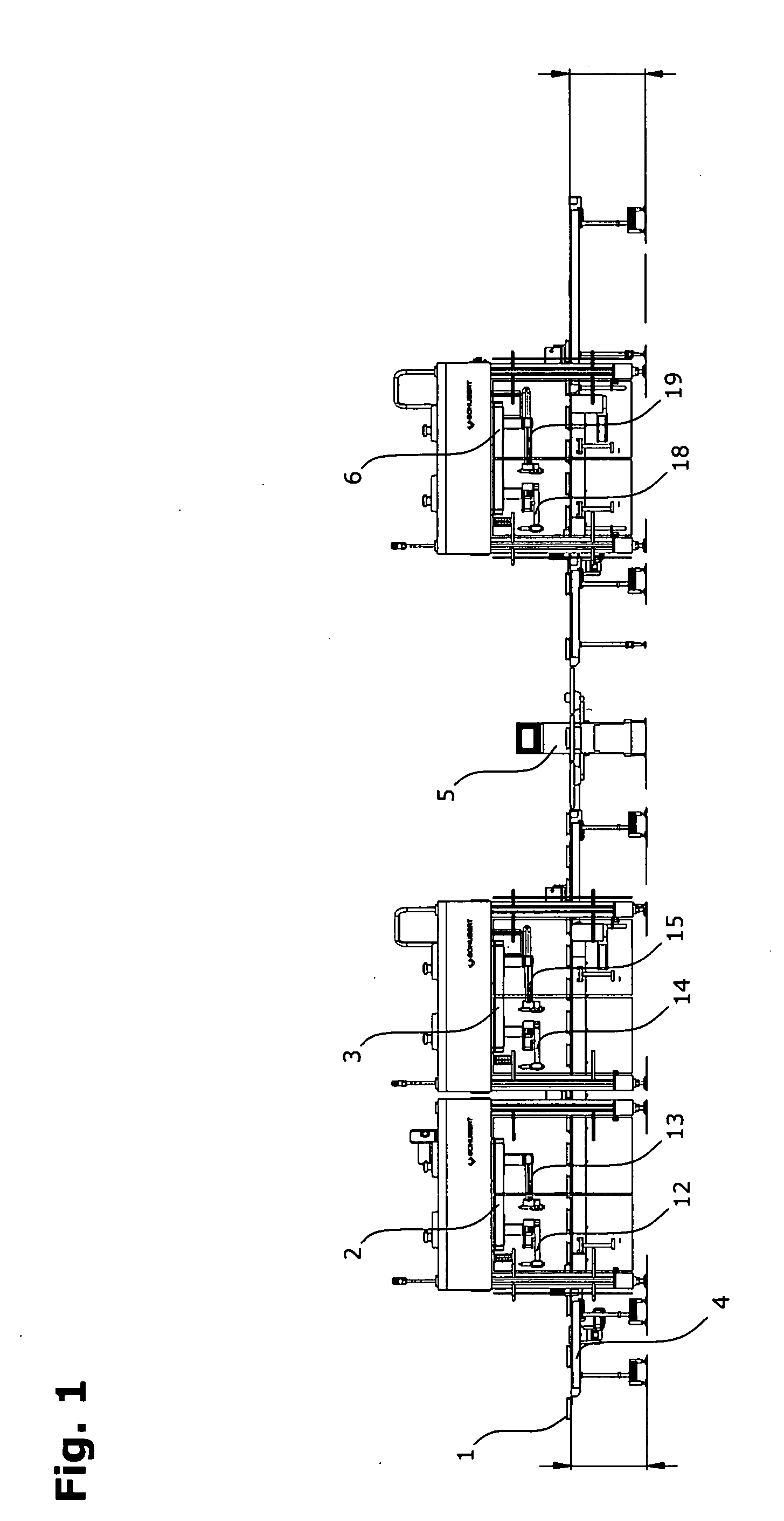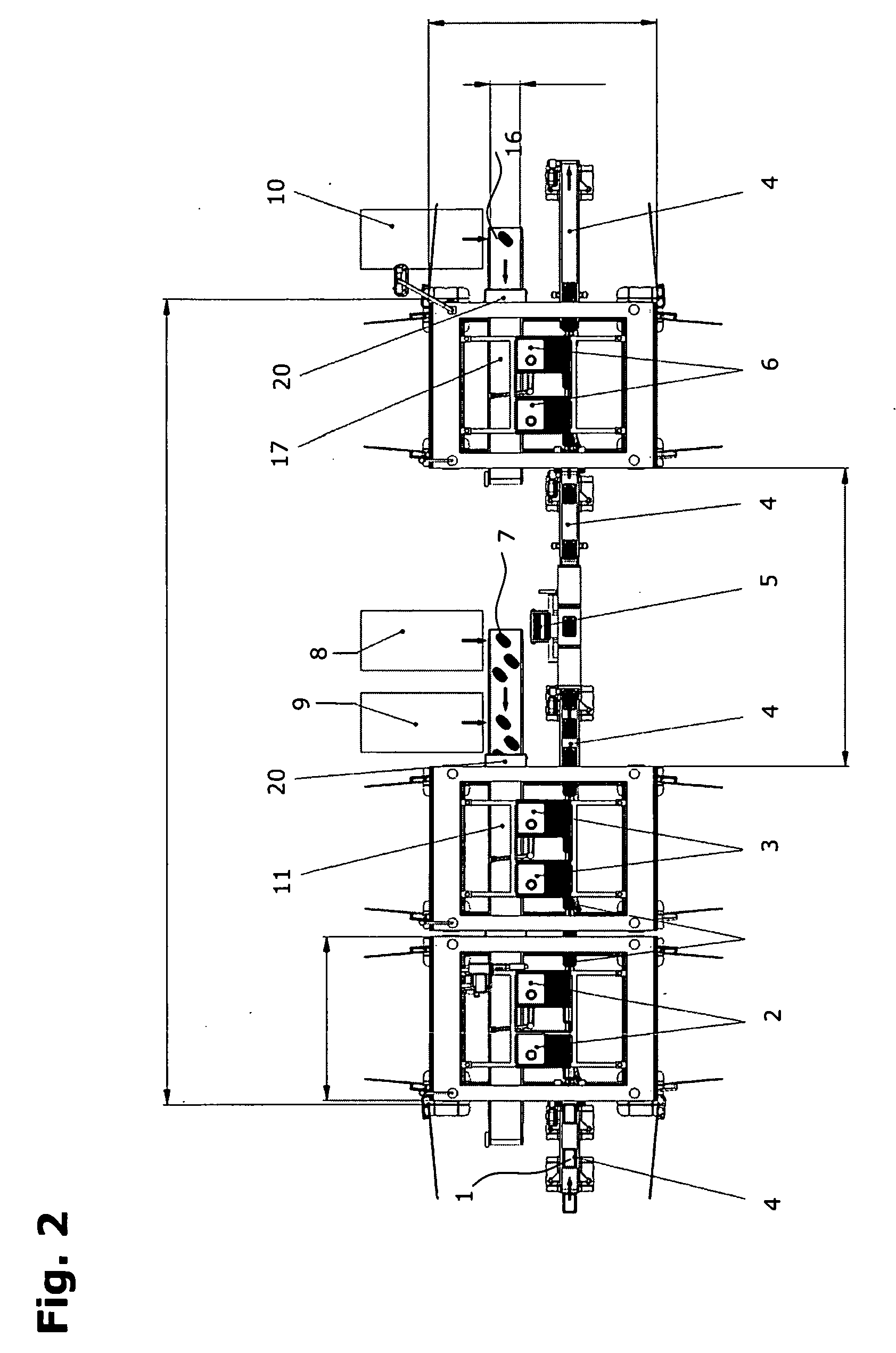Method and device for consolidating items into a single unit of a pre-defined total weight
a technology of total weight and item, applied in the field of method and device for consolidating items into a single unit of predefined total weight, can solve the problems of significant deviation from the desired total weight, loss for the manufacturer, labor-intensive and time-consuming, and thus cost-intensiv
- Summary
- Abstract
- Description
- Claims
- Application Information
AI Technical Summary
Benefits of technology
Problems solved by technology
Method used
Image
Examples
Embodiment Construction
[0031]FIG. 1 illustrates a device for consolidating a number n of items in containers 1 with two first insertion stations 2 and 3, a conveyor 4, a scale 5, and a second insertion station. FIG. 2 illustrates the device in plan view. In this representation, additional individual items 7, as well as the three portioning and cutting devices 8, 9 and 10, can be seen.
[0032]The two portioning and cutting devices 8 and 9 slice off single slices with a desired and pre-defined slice weight from a larger piece of meat, which is not shown in the drawing. The actual weight of each of the slices can vary within a range. The slices are items 7, which are to be consolidated in individual containers 1. Using a conveyor 11, the items 7 are supplied to two first insertion stations 2 and 3. A scanner 20 registers the position of the items 7 on the conveyor and transmits this information to the two insertion stations. The two insertion stations are provided with two gripper arms 12 and 13, as well as 14...
PUM
| Property | Measurement | Unit |
|---|---|---|
| weight | aaaaa | aaaaa |
| total weight | aaaaa | aaaaa |
| weights | aaaaa | aaaaa |
Abstract
Description
Claims
Application Information
 Login to View More
Login to View More - R&D
- Intellectual Property
- Life Sciences
- Materials
- Tech Scout
- Unparalleled Data Quality
- Higher Quality Content
- 60% Fewer Hallucinations
Browse by: Latest US Patents, China's latest patents, Technical Efficacy Thesaurus, Application Domain, Technology Topic, Popular Technical Reports.
© 2025 PatSnap. All rights reserved.Legal|Privacy policy|Modern Slavery Act Transparency Statement|Sitemap|About US| Contact US: help@patsnap.com



